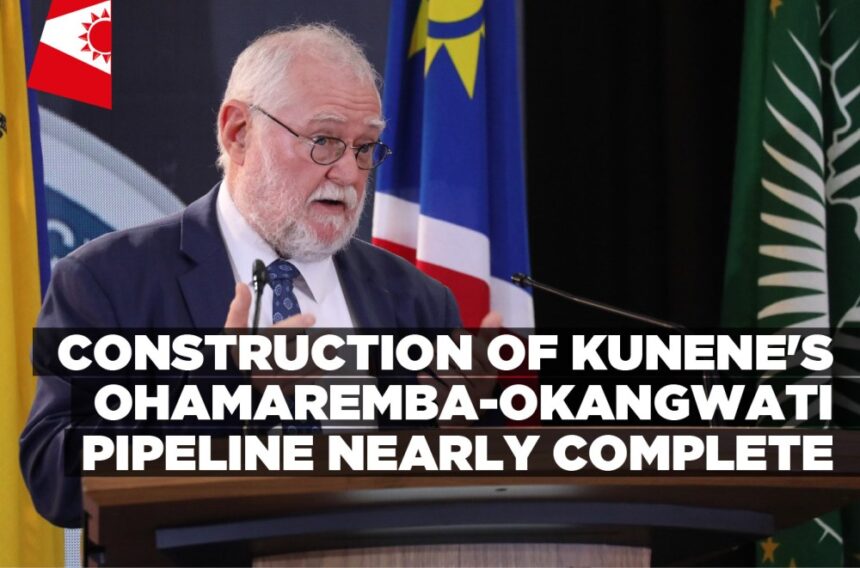Staff Reporter
THE Namibian Government has made significant strides in the construction of the Ohamaremba-Okangwati Pipeline in the Kunene Region, with 79% of the project now complete.
This was revealed by Calle Schlettwein, the Minister of Agriculture, Water, and Land Reform, who said that full completion of the pipeline is anticipated by July. He further disclosed that the pipeline will provide potable water to the Okanguati settlement from the Ohamaremba aquifer.
Schlettwein made these announcements during the Commemoration of World Wetlands Day and World Water Day 2024, celebrated under the themes “Wetlands and Human Wellbeing” and “Leveraging Water for Peace,” respectively, in Opuwo, Kunene Region.
In addition to the pipeline progress, Schlettwein outlined other achievements in water infrastructure. This includes the successful installation of 31 production boreholes during the past financial year, the ongoing installation of nine successfully drilled boreholes, and the ongoing rehabilitation of 27 existing boreholes. This, he said, brings the total number of active boreholes to 682.
“The construction of two mini desalination plants (a water softening project) was completed at Condor in Sesfontein Constituency and Petrusfontein Constituency, respectively. The modernization of traditional wells with solar systems is ongoing. We commend the Directorate of Water Supply and Sanitation Coordination in the Kunene Region for all these,” the minister added.
Despite these achievements, Schlettwein emphasized that the Kunene Region is still facing a number of challenges in the water sector.
“One is that the Kunene Region is prone to flash floods and droughts brought about by the impacts of climate change,” he said.
He explained that the occurrence of flash floods in some areas of the region is a main concern because communities get cut off from reaching centres like Opuwo where critical services are, and, in some cases, cars were washed away and lives lost due to the heavy flows.
“There is a great need to have a reliable early warning system operational on the main streams where flash floods are common. Additionally, this effort should be coupled with the construction of standard bridges to facilitate the smooth crossing of these rivers and tributaries,” he suggested.



Leave a Reply